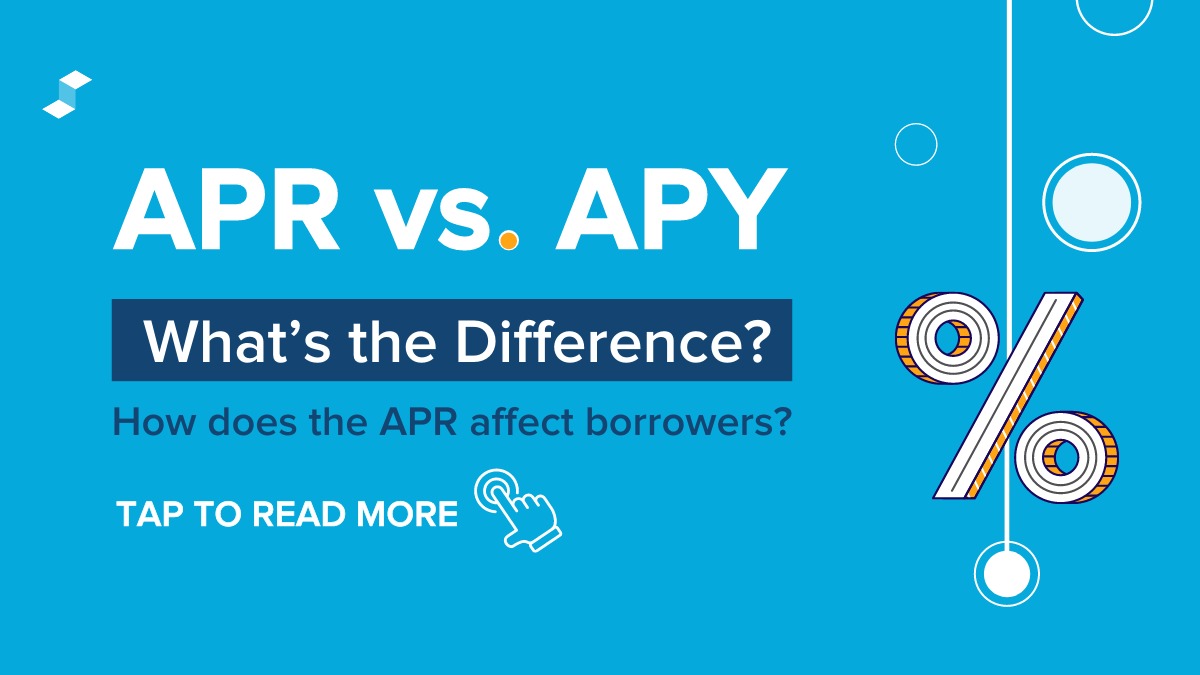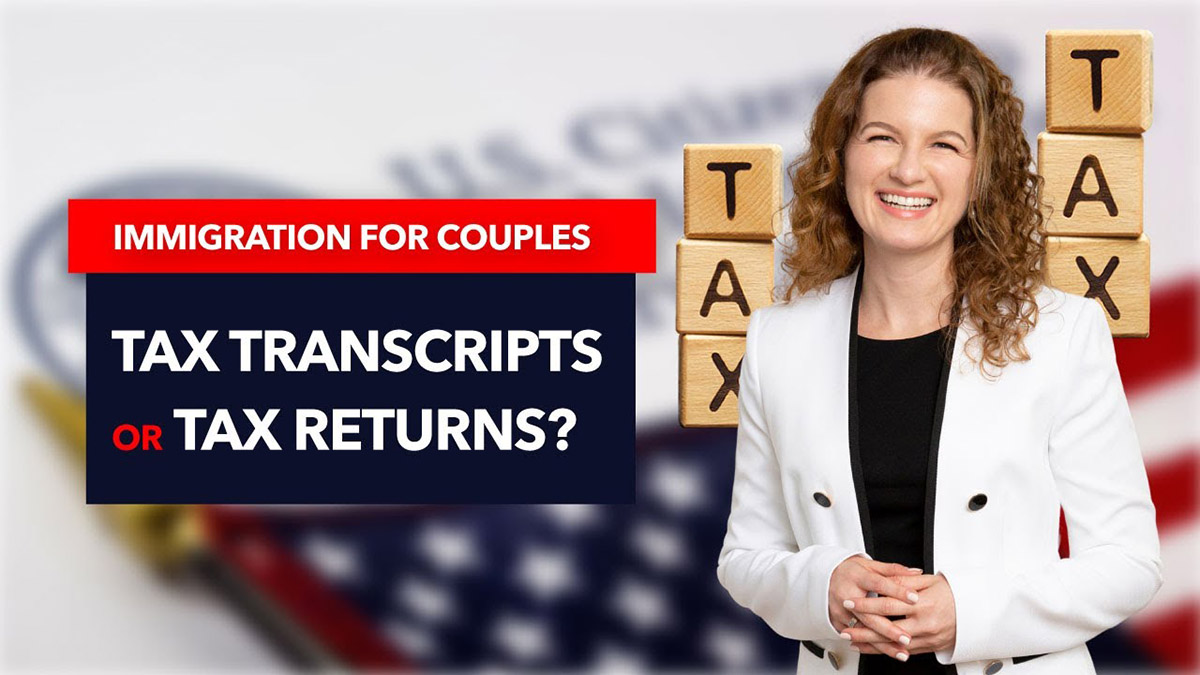Home>Finance>What Is The Difference Between Tax Credits And Tax Deductions?


Finance
What Is The Difference Between Tax Credits And Tax Deductions?
Published: January 20, 2024
Learn the key distinction between tax credits and tax deductions in finance, and understand how each can impact your overall tax liability.
(Many of the links in this article redirect to a specific reviewed product. Your purchase of these products through affiliate links helps to generate commission for LiveWell, at no extra cost. Learn more)
Table of Contents
- Introduction
- Definition of Tax Credits
- Definition of Tax Deductions
- Key Characteristics of Tax Credits
- Key Characteristics of Tax Deductions
- Benefits of Tax Credits
- Benefits of Tax Deductions
- Limitations of Tax Credits
- Limitations of Tax Deductions
- Key Differences Between Tax Credits and Tax Deductions
- Conclusion
Introduction
When it comes to navigating the complex world of taxes, understanding the difference between tax credits and tax deductions is crucial. These two terms often cause confusion among taxpayers, but they play distinct roles in reducing your overall tax liability. Both tax credits and tax deductions can help you save money, but they work in different ways.
In essence, tax credits and tax deductions are incentives provided by the government to encourage certain behaviors or alleviate financial burdens. However, their mechanisms and implications for your tax bill differ significantly. In this article, we will delve into the definitions, key characteristics, benefits, and limitations of tax credits and tax deductions. We will also highlight the key differences between the two, helping you gain a clear understanding of how each can impact your financial situation.
By the end of this article, you will have a comprehensive understanding of the difference between tax credits and tax deductions and how they can affect your overall tax liability. Armed with this knowledge, you will be better equipped to make informed decisions and maximize your tax savings.
Definition of Tax Credits
Tax credits are a type of tax incentive offered by the government to reduce the amount of tax that an individual or business owes. Unlike tax deductions, which reduce the taxable income, tax credits directly reduce the amount of tax owed to the government. In other words, tax credits provide a dollar-for-dollar reduction in your tax liability.
There are various types of tax credits, ranging from general tax credits available to all taxpayers to specific tax credits targeting certain behaviors or expenditures. Some common examples of tax credits include the Child Tax Credit, the Earned Income Tax Credit, and the Lifetime Learning Credit. These credits are designed to provide financial relief to individuals and families, encourage employment, and promote education.
The amount of a tax credit is typically determined by a specific formula or a fixed amount set by the government. It’s important to note that tax credits are generally non-refundable, meaning they can only reduce your tax liability to zero. However, some tax credits, known as refundable tax credits, can result in a tax refund if they exceed the amount of tax owed.
When filing your tax return, you will need to report any eligible tax credits you qualify for. This may require providing additional documentation or meeting specific criteria. It’s important to consult with a tax professional or refer to the IRS guidelines to ensure you accurately claim any tax credits you are eligible for.
Tax credits can provide significant financial benefits and can have a substantial impact on your overall tax liability. They can help lower-income individuals and families who may have limited resources, as well as individuals who have incurred certain expenses or engaged in specific activities that are eligible for tax credits.
Definition of Tax Deductions
Tax deductions are expenses, deductions, or allowances that reduce the amount of your taxable income. Unlike tax credits, which directly reduce your tax liability, tax deductions reduce the portion of your income that is subject to taxation. This means that tax deductions can help lower your overall tax bill by decreasing your taxable income.
There are various types of tax deductions available to individuals and businesses, ranging from common deductions such as mortgage interest, state and local taxes, and medical expenses to more specific deductions related to self-employment, education, and charitable contributions. These deductions are designed to provide relief for certain expenses or investments and incentivize behaviors that benefit the economy or society.
When you file your tax return, you are allowed to claim deductions relevant to your financial situation. The total amount deducted will depend on the eligible expenses incurred throughout the tax year. It’s important to keep accurate records of your expenses and ensure that you meet the specific criteria set by the Internal Revenue Service (IRS) to claim these deductions.
It’s worth noting that tax deductions can be either standard deductions or itemized deductions. The standard deduction is a predetermined amount set by the IRS each year, and you can choose to claim this deduction without having to provide detail on specific expenses. On the other hand, itemized deductions require you to provide detailed documentation of individual expenses, and you can deduct the total amount of these expenses if they exceed the standard deduction.
It’s important to carefully consider your options when it comes to tax deductions. While taking the standard deduction is simpler, itemizing deductions can sometimes result in greater tax savings if your eligible expenses exceed the standard deduction amount.
Overall, tax deductions can significantly reduce your taxable income and lower your overall tax liability. By taking advantage of eligible deductions, you can keep more of your hard-earned money and potentially receive a larger tax refund.
Key Characteristics of Tax Credits
Understanding the key characteristics of tax credits can help you grasp their significance and utilize them effectively. Here are some key characteristics of tax credits:
- Direct reduction in tax liability: Unlike tax deductions, which reduce your taxable income, tax credits directly reduce the amount of tax you owe. For example, if you have a tax liability of $5,000 and qualify for a $1,000 tax credit, your tax liability will be reduced to $4,000.
- Dollar-for-dollar reduction: Tax credits provide a dollar-for-dollar reduction in your tax liability. This means that each dollar of tax credit reduces your taxes owed by the same amount. For instance, a $1,000 tax credit will reduce your tax liability by $1,000, regardless of your income level.
- Non-refundable vs. refundable tax credits: Most tax credits are non-refundable, meaning they can only reduce your tax liability to zero. However, there are also refundable tax credits that can result in a tax refund if they exceed the amount of tax owed. Refundable tax credits are particularly beneficial for low-income individuals and families who may have little or no tax liability.
- Specific eligibility requirements: Each tax credit has specific eligibility requirements that taxpayers must meet in order to claim the credit. These requirements may include factors such as income level, filing status, age, and eligibility criteria for specific activities or expenses. It’s important to review the guidelines provided by the IRS to determine if you qualify for a particular tax credit.
- Wide range of available credits: There are numerous tax credits available, covering a wide range of categories such as education, homeownership, child and dependent care, adoption, energy efficiency, and more. Understanding the specific tax credits that you may qualify for can help you optimize your tax savings.
- Documentation and reporting: To claim tax credits, you are usually required to provide documentation or complete certain forms when filing your tax return. This documentation may include proof of expenses, income-related information, or certification for specific activities. It’s essential to keep accurate records and ensure you are following the correct reporting procedures to claim your tax credits.
By understanding these key characteristics, you can effectively leverage tax credits to minimize your tax liability and maximize your potential tax savings.
Key Characteristics of Tax Deductions
Understanding the key characteristics of tax deductions is crucial for optimizing your tax savings. Here are some key characteristics of tax deductions:
- Reduction in taxable income: Tax deductions reduce your taxable income by subtracting eligible expenses or deductions from your total income. This lower taxable income is then used to calculate the amount of tax you owe. For example, if your income is $50,000 and you have $5,000 in deductions, your taxable income will be reduced to $45,000.
- Variety of eligible expenses: Tax deductions cover various expenses, including mortgage interest, state and local taxes, medical expenses, education expenses, self-employment expenses, and charitable contributions. It is important to keep track of these expenses throughout the year and maintain proper documentation to claim the deductions.
- Standard deduction vs. itemized deductions: Taxpayers have the option to take the standard deduction or itemize their deductions. The standard deduction is a predetermined amount set by the IRS each year, which allows taxpayers to deduct a fixed amount without itemizing specific expenses. Itemized deductions require taxpayers to provide detailed information regarding individual expenses, and the total amount of these deductions must exceed the standard deduction to be beneficial.
- Tax bracket impact: Tax deductions directly impact your tax liability by reducing your taxable income. By lowering your income, you may move into a lower tax bracket, resulting in a decreased tax liability. This allows you to keep more of your hard-earned money by paying a lower percentage of tax.
- Reporting and documentation: To claim tax deductions, you need to accurately report your eligible expenses and provide supporting documentation when filing your tax return. Keeping detailed records of your expenses, such as receipts and invoices, is essential for substantiating your deductions and avoiding potential audits.
- Tax planning and optimization: Understanding the tax deductions available to you allows for strategic tax planning and optimization. By considering timing and the potential impact of deductions, you can maximize your tax savings and minimize your overall tax liability.
By familiarizing yourself with these key characteristics of tax deductions, you can make informed decisions when it comes to claiming deductions and effectively reduce your taxable income.
Benefits of Tax Credits
There are several key benefits to utilizing tax credits when filing your taxes. Understanding these benefits can help you maximize your tax savings and take advantage of available credits. Here are some of the benefits of tax credits:
- Direct reduction in tax liability: Tax credits offer a direct reduction in your tax liability by lowering the amount of tax you owe. This can result in significant savings and potentially even lead to a tax refund if the credit exceeds the amount owed.
- Dollar-for-dollar reduction: Tax credits provide a dollar-for-dollar reduction in your taxes. This means that every dollar of credit you claim results in a corresponding dollar reduction in your tax liability. This is a powerful benefit since it directly impacts the amount of money you owe the government.
- Financial relief for specific expenses or behaviors: Tax credits are designed to provide financial relief for specific expenses or behaviors. For example, credits like the Child Tax Credit and the Child and Dependent Care Credit can help offset the costs of raising children or childcare expenses. Other credits, such as the Education Tax Credits, provide assistance for educational expenses.
- Support for low-income individuals and families: Many tax credits are targeted towards low-income individuals and families, providing much-needed financial assistance. Credits such as the Earned Income Tax Credit (EITC) and the Child Tax Credit (CTC) can significantly reduce the tax burden for those who may have limited resources.
- Encouragement of desired behaviors: Tax credits are often used to incentivize behaviors that benefit society or the economy. For instance, credits for energy-efficient home improvements or the adoption of children encourage actions that promote environmental sustainability and support families.
- Reduction of tax liability across multiple tax brackets: Tax credits can reduce your tax liability regardless of your income level. This means that even individuals in higher tax brackets can benefit from certain credits. By effectively utilizing credits, you can effectively lower your overall tax liability.
By taking advantage of tax credits, you can significantly reduce your tax liability and keep more of your hard-earned money. It is important to understand the specific eligibility requirements and documentation needed to claim these credits to ensure you receive the maximum benefit.
Benefits of Tax Deductions
Tax deductions offer several key benefits that can help you reduce your taxable income and ultimately lower your overall tax liability. Understanding these benefits can empower you to optimize your tax savings. Here are some of the benefits of tax deductions:
- Reduction in taxable income: Tax deductions lower your taxable income by subtracting eligible expenses or deductions from your total income. This translates to a decrease in the portion of your income subject to taxation, resulting in potential tax savings.
- Wide range of eligible expenses: Tax deductions cover various expenses, including mortgage interest, state and local taxes, medical expenses, education expenses, self-employment expenses, and charitable contributions. This allows you to benefit from deductions related to your specific financial circumstances.
- Standard deduction or itemized deductions: Taxpayers have the option to take the standard deduction or itemize their deductions, whichever is more advantageous. This flexibility allows you to choose the deduction method that results in the greatest reduction in taxable income.
- Tax bracket impact: By reducing your taxable income through deductions, you may move into a lower tax bracket, which can significantly lower your overall tax liability. This means you pay a lower percentage of tax on your income, resulting in potential savings.
- Encouragement of desired behaviors: Certain deductions are designed to incentivize behaviors that benefit society or the economy. For example, deductions for energy-efficient home improvements or contributions to charitable organizations promote actions that are environmentally friendly and support philanthropic efforts.
- Support for self-employed individuals: Self-employed individuals can benefit from deductions that specifically apply to their business expenses. This helps offset the costs associated with running a business and can contribute to significant tax savings.
- Potential for increasing tax refunds: By maximizing your deductions, you can potentially increase your tax refund or reduce any tax balance due. This allows you to keep more money in your pocket throughout the year or receive a larger refund after filing your tax return.
By leveraging tax deductions effectively, you can lower your taxable income, reduce your tax liability, and ultimately keep more money in your pocket. Understanding the specific deductions available to you and their eligibility requirements allows you to maximize your tax savings.
Limitations of Tax Credits
While tax credits offer valuable benefits, it’s important to be aware of their limitations. Understanding these limitations can help you navigate the tax landscape more effectively. Here are some of the limitations to consider when it comes to tax credits:
- Specific eligibility criteria: Tax credits often have specific eligibility criteria that must be met in order to qualify. These criteria may be based on factors such as income level, filing status, age, or specific activities or expenses. It’s important to carefully review the eligibility requirements for each credit to ensure that you qualify before claiming it.
- Non-refundable nature of most credits: Many tax credits are non-refundable, meaning they can only reduce your tax liability to zero. This means that if the credit exceeds your tax liability, you won’t receive a refund for the remaining amount. Refundable tax credits are an exception, as they can result in a refund even if they exceed your tax liability.
- Annual expiration or changes: Some tax credits have an expiration date or are subject to changes in legislation, making them available for a limited time or subject to modification. It’s important to stay updated with current tax laws and regulations to ensure that you can take advantage of applicable credits before they expire or undergo changes.
- Interaction with other tax provisions: Certain tax credits may interact with other tax provisions, such as phase-outs based on income level. This means that as your income increases, the available credit may be reduced or completely phased out, limiting its impact. It’s important to understand how these interactions may affect your eligibility for and the value of specific tax credits.
- Documentation requirements: Tax credits often require specific documentation or forms to be filed as part of your tax return. It’s crucial to keep accurate records and gather the necessary documentation to support your claim for these credits. Failing to provide adequate documentation can result in the disallowance of the credit or potential audits by the tax authorities.
- Limited dollar amount: Some tax credits have a maximum dollar amount that can be claimed. This means that even if you have expenses or meet certain criteria that would normally make you eligible for a higher credit, you may only be able to claim up to the specified limit. Being aware of these limitations can help you plan your finances accordingly.
While tax credits can provide significant tax savings, it’s important to understand their limitations and ensure that you meet the eligibility requirements and follow the necessary procedures to claim them effectively.
Limitations of Tax Deductions
While tax deductions offer a range of benefits, it’s essential to be aware of their limitations. Understanding these limitations can help you navigate the tax landscape more effectively. Here are some key limitations to consider when it comes to tax deductions:
- Itemization requirements: Itemizing deductions can provide greater tax savings, but it requires keeping detailed records and providing accurate documentation of eligible expenses. This additional effort may be burdensome for some taxpayers who may find it easier to take the standard deduction instead.
- Thresholds and limitations: Certain tax deductions have thresholds or limitations that need to be met before they can be claimed. For example, medical expenses can only be deducted if they exceed a certain percentage of your adjusted gross income. Understanding these thresholds and limitations helps you determine if your expenses are eligible for deductions.
- Phase-outs for high-income earners: Some tax deductions may be subject to phase-outs for high-income earners. This means that as your income crosses a certain threshold, the deduction may be reduced or completely eliminated. Being aware of these phase-outs allows you to plan your finances accordingly and understand the impact on your tax liability.
- Savings limited to your tax rate: Tax deductions reduce your taxable income, which in turn decreases your overall tax liability. However, it’s important to note that deductions only provide savings at your applicable tax rate. For example, if you are in the 25% tax bracket, a $1,000 tax deduction will save you $250 in taxes.
- Documentation requirements: To claim tax deductions, you must provide proper documentation and evidence of eligible expenses. This includes keeping receipts, invoices, and other relevant records throughout the tax year. Failing to provide adequate documentation may result in the disallowance of deductions or potential audits by tax authorities.
- Non-refundable nature: Tax deductions can lower your tax liability but cannot result in a tax refund on their own. Unlike refundable tax credits, deductions can only reduce your tax liability to zero. If your deductions exceed your tax liability, you won’t receive a refund for the remaining amount.
Understanding the limitations of tax deductions can help you make informed decisions when it comes to managing your finances and optimizing your tax savings. By staying knowledgeable and meeting the necessary requirements, you can effectively leverage tax deductions to reduce your taxable income and lower your overall tax liability.
Key Differences Between Tax Credits and Tax Deductions
While tax credits and tax deductions are both valuable tools for reducing your tax liability, it’s important to understand the key differences between them. These differences can affect how much you can save on your taxes and the way they impact your overall financial situation. Here are the key differences between tax credits and tax deductions:
- Impact on tax liability: Tax credits directly reduce the amount of tax you owe on a dollar-for-dollar basis. They provide a direct reduction in your tax liability and can even result in a tax refund if they exceed the amount owed. On the other hand, tax deductions reduce your taxable income, resulting in a smaller portion of your income being subject to taxation. This indirectly reduces your tax liability.
- Timing of savings: Tax credits provide immediate savings, as they reduce the tax you owe for the current tax year. They are applied directly to your tax liability when you file your tax return. In contrast, tax deductions provide savings over the long term by reducing your taxable income and subsequent tax liability.
- Refundability: Many tax credits are non-refundable, meaning they can only reduce your tax liability to zero. However, some credits are refundable and can result in a tax refund if they exceed the amount owed. On the other hand, tax deductions do not directly result in a refund. They only lower your tax liability based on your tax bracket and any limits imposed by specific deductions.
- Eligibility criteria: Tax credits often have specific eligibility criteria that must be met in order to qualify. These criteria may include income limits, filing status, age, or meeting certain criteria for specific activities or expenses. Tax deductions, on the other hand, typically have eligibility requirements based on specific expenses, but they are generally more accessible and available to a wider range of taxpayers.
- Documentation requirements: Tax credits often require specific documentation or forms to be filed with your tax return to substantiate your eligibility. The documentation may include proof of expenses, income-related information, or certification for specific activities or qualifications. Tax deductions also require documentation, but the requirements are usually less stringent and may vary depending on the type of deduction claimed.
- Impact on tax savings: Tax credits generally offer more significant tax savings compared to tax deductions. This is because tax credits directly reduce your tax liability on a dollar-for-dollar basis. They have a direct impact on the amount of tax you owe. Tax deductions, on the other hand, reduce your taxable income, which indirectly lowers your tax liability based on your marginal tax rate.
- Types of expenses covered: Tax credits can cover a wide range of expenses or activities that the government aims to incentivize, such as childcare, education, homeownership, energy efficiency, and more. Tax deductions also cover various expenses, including mortgage interest, state and local taxes, medical expenses, education expenses, self-employment expenses, and charitable contributions.
Understanding the key differences between tax credits and tax deductions can help you make informed decisions when it comes to managing your taxes and maximizing your savings. By leveraging both effectively, you can optimize your tax strategy and ultimately reduce your overall tax liability.
Conclusion
Tax credits and tax deductions are both valuable tools that can help you reduce your overall tax liability. While they share the common goal of saving you money on taxes, there are important distinctions between the two. Tax credits provide a direct reduction in your tax liability on a dollar-for-dollar basis, while tax deductions lower your taxable income, indirectly lowering your tax liability based on your marginal tax rate.
Tax credits offer immediate and direct savings, and some credits are even refundable, allowing you to receive a tax refund if they exceed the amount owed. They often have specific eligibility criteria and require proper documentation to substantiate your claim. Tax credits can provide financial relief for specific expenses, support low-income individuals and families, and encourage desired behaviors.
Tax deductions, on the other hand, reduce your taxable income and provide long-term savings. They cover various expenses and can be claimed by a wider range of taxpayers. While they do not result in a direct refund, tax deductions can lower your tax liability and potentially move you into a lower tax bracket.
Understanding the differences between tax credits and tax deductions is essential for effective tax planning. By leveraging both tools strategically, you can optimize your tax savings and keep more of your hard-earned money.
It’s important to consult a tax professional or refer to the IRS guidelines to ensure you accurately claim the tax credits and deductions you are eligible for. By doing so, you can navigate the complexities of the tax system, minimize your tax liability, and maximize your tax savings.
In conclusion, by understanding the definitions, key characteristics, benefits, limitations, and key differences between tax credits and tax deductions, you can make informed decisions when it comes to managing your taxes. Taking advantage of available credits and deductions can lead to substantial tax savings and contribute to your overall financial well-being.














